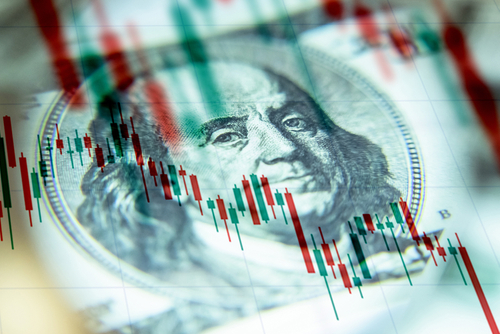
Monetary Policy & Inflation | US

Monetary Policy & Inflation | US
This article is only available to Macro Hive subscribers. Sign-up to receive world-class macro analysis with a daily curated newsletter, podcast, original content from award-winning researchers, cross market strategy, equity insights, trade ideas, crypto flow frameworks, academic paper summaries, explanation and analysis of market-moving events, community investor chat room, and more.
Treasury yields dipped on Friday as investors analysed key economic data and considered the possible impact on the Federal Reserve’s (Fed) plans for raising interest rates. Friday’s US Jobs data revealed non-farm payrolls (NFPs) rose 223,000 in December and unemployment fell to 3.5%, while wages grew slower than expected. Meanwhile, the ISM Services PMI plummeted to 49.6%, suggesting the services industry contracted in December. Together, markets appear to be digesting the data as evidence that the Fed may soon take a break from its hiking cycle. Dominique disagrees. Looking forward, she believes the market is underestimating upside growth, inflation risk, and Fed tightening and continues to expect a 50bp hike at the February FOMC meeting as well as a further increase in the terminal Fed funds rate in the March SEP.
Turning to market moves, US 10Y yields closed the week at 3.55% (-28bps WoW) compared to 4.24% (-10bps WoW) for the 2Y and 4.51% (+17bps WoW) for the 3M. The magnitude of the 2s10s inversion reduced to -69bps on Friday from -74bps a day before. The inversion of the 3M10Y part of the yield deepened to -96bps on Friday from -61bps at the start of the week. The probability of recession increases with yield curve inversion.
Our recession model, which uses the 2Y10Y part of the yield curve, assigns an 87% chance of a recession within the next twelve months (Charts 1 and 3). It has signalled at least an 87% chance of recession consistently since mid-November 2022. Meanwhile, the Fed recession model, which uses the 3M10Y part of the yield curve, produces a 54% chance of recession (Chart 2). Notably, both models are producing recession probabilities higher than that of the 2007-2008 Global Financial Crisis (GFC).
We introduced two models for predicting US recessions using the slope of the US yield curve. When long-term yields start to fall towards or below short-term yields, the curve flattens or inverts. This has often predicted a recession in subsequent months. Our model is based on the 2s10s curve compared to a model from the Fed that is based on 3M10Y curve. We believe that the 2Y better captures expectations for Fed hikes in coming years and is therefore more forward-looking.


Spring sale - Prime Membership only £3 for 3 months! Get trade ideas and macro insights now
Your subscription has been successfully canceled.
Discount Applied - Your subscription has now updated with Coupon and from next payment Discount will be applied.